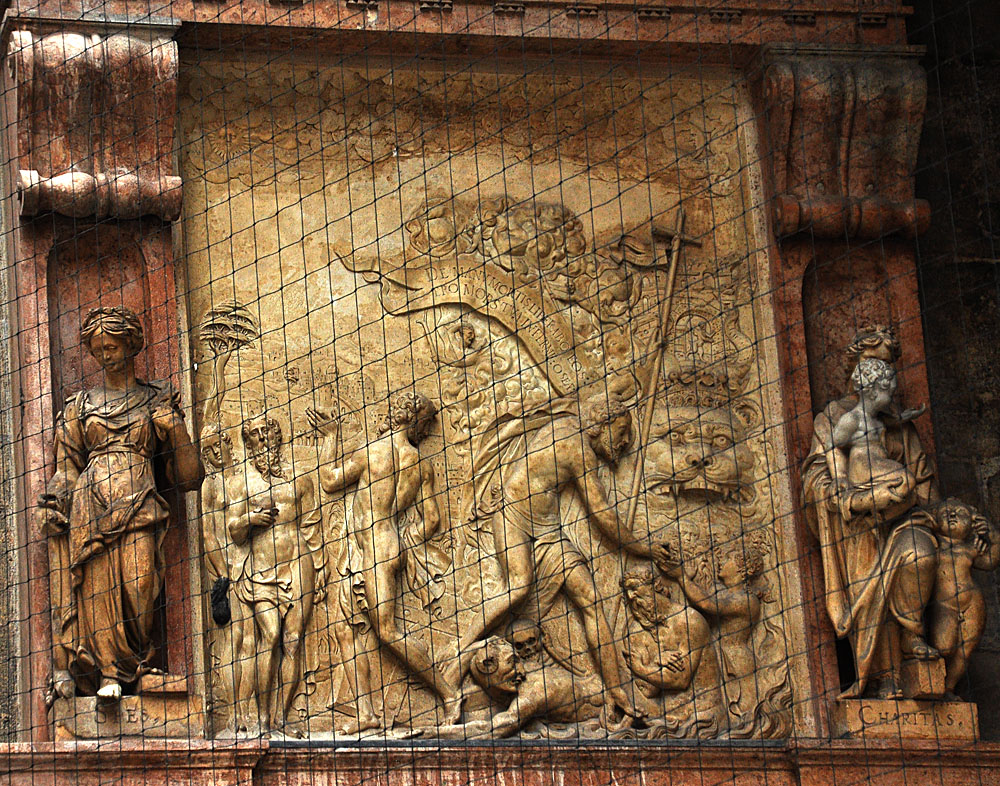The Harrowing of Hell

14th century or later
St. Stephen's Cathedral, Vienna, Austria
The distinguishing characteristic of a Harrowing of Hell is a depiction of the entry to Hell as a monstrous mouth. In this case, the sculptor also quotes the broken door (beneath Christ's right foot) that distinguishes the very similar Anastasis type. In both types, Christ rescues Adam and Eve from Hell along with the prophets and patriarchs. Here the latter are seen just emerging from the mouth of Hell, who bears on his head a crown and an elaborate city with a goat-like demon at its gate. Other demon figures fly away in a panic resembling the rout of demons in medieval plays on this subject. Christ's conquest of Sin and Death is symbolized by the two figures over which he is stepping: a skull and a goat-man.
The wall on which this plaque is found was built in 1359, but conceivably the plaque could be from a later date. The figures in the lower right corner and behind Christ should most likely be interpreted in the medieval fashion, as progressive images of Adam and Eve as they emerge from Hell into a new Paradise. (The female figures at far left and far right have the same curly hair and youthful countenance; their two companions, the same full beards.) Yet the naturalistic musculature and the smooth flow from right to left are more Renaissance in inspiration, as are the framing allegorical figures of SPES and CHARITAS, "Hope" and "Charity."
The fluttering banner has an inscription abbreviated from Hosea 13:14: DE MANU MORTIS LIBERABO EOS ⋅ ERO MORS TUA INFERNE: OSEA, "I will deliver them out of the hand of death.… O death, I will be thy death.…"
View this image in full resolution.
Read more about the Harrowing of Hell.
Photographed at the cathedral by Richard Stracke, shared under Attribution-NonCommercial-ShareAlike license.